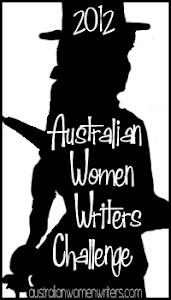‘Childhood is cannibals and psychotics vomiting in your mouth!’
Maurice Sendak died this week. As a child, his books were like sacred objects, which to me, is against the spirit of his work completely. Not only did I have to wash my hands before I touched them, I was not allowed to pore over these books without supervision. This is because almost all the copies we had were hardbacks, neatly covered in opaque library plastic, carefully hoarded by my teacher-librarian mother and protected by her from the sticky, dirty, page bending hands of children. They are even now, more than 30 years later, still in pristine condition; withstanding three children and five grandchildren.
As an adult, with my own sticky, dirty, page bending, book chewing child, this makes me incredibly sad. So I let him have them, all of them. And they are all paperbacks, and if we have to have two copies of each to see us through his childhood, then so be it.
Of course, being forbidden, only increased their cachet. More than once, I read them on the quiet, hoping I wouldn’t get sprung. Aside from being well looked after, they were also beautiful and subversive books, featuring imagery and themes, seldom dealt with in children’s literature.
I still remember the mild scandal that erupted about In the Night Kitchen, which features Mickey’s naked bottom, not to mention the rest of him. This was the cause of some consternation among librarians, although it was fair to say not my mother, who had bought it for the school library. In The Night Kitchen deals with falling into the dark, and indeed the bakers all have strangely even, square and short moustaches. The oven imagery is thinly veiled, in my opinion, and Sendak confirmed in interviews, that the references are indeed a comment on the Holocaust. Much more concerning you would think, than a naked bum or the full frontal Mickey.

A baby is snatched away by goblins in Outside Over There. Image: Harper Collins.
Outside Over There, less well-known than Where the Wild Things Are, features incredibly distracted parental figures, who so preoccupied with themselves and their love, leave their eldest daughter in charge of her younger sibling. Young Ida is initially no match for the goblins who kidnap her baby sister while she plays her wonder horn. An allegory for children everywhere, that sometimes you just have to fix it yourself and be courageous and brave. Rescuing your little sister, what higher achievement could you wish? The dark themes of this book have so far washed over my toddler, although he recognises that the baby is in trouble and needs saving. In the middle where the illustrations are of all the crying babies the goblins have kidnapped, he shouts loudly about how sad they are.
I let him have Higglety Pigglety Pop! too. Subtitled There must be more to life, it tells the story of a dog called Jennie who has everything, but is desperately unhappy. It is the story of how having everything handed to you can make you unhappy, and that to be fulfilled, you need to pursue your own dreams – even if that means saving baby from being eaten by the lion and joining ‘The World Mother Goose Theatre’. This book too, features distracted, ill-attentive adults. In Higglety Pigglety Pop, the parents of the baby move house, and forget to take her with them. It is a book for older children, and yet despite the density of the text, the story carries Benedict along, just not in a single sitting, yet.
Sendak understood how frightening childhood could be, how images and ideas, without comprehension of context, could loom large; being considered wild, being naked and having grand plans, could all get you into trouble with adults. Could lead to being sent to bed, which for some children was a blessing, as it meant getting out of eating your dinner, a torture all of its own. The sadness a child feels when she realises that these adults have no idea what they are doing, is a sadness that never leaves a person. What Sendak’s books give you is a sense that it doesn’t matter if the world is a confusing mess, you can work it all out for yourself and that sometimes the monsters are just that little bit closer than you imagine.
Amanda Katz writes in an essay for NPR books, that it is the adults who are scared of Sendak’s books, not the children. She writes:
‘Meanwhile, he [Sendak] reminds adults — even those of us who were once those young and fascinated readers, but who are grown now — to trust our children, who may in the end be less fearful of climbing outside than we are to watch them do it.’
Fortunately, while my mother was over-protective of the precious books, she let us climb out of the windows and be wild things. Sendak reminds us, and we need reminding, that children need to be wild, they need to allowed to express themselves, and tell their stories, even when these stories are too difficult for adults to hear.
‘I knew terrible things, but I knew I mustn’t let adults know I knew … it would scare them.’




Recent Comments